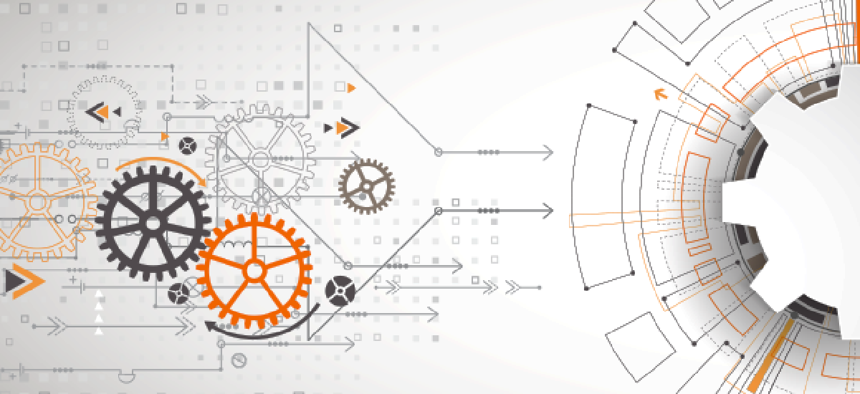Automation on the move


Connecting state and local government leaders
Agencies are eyeing robotic process automation to streamline applications like data entry and help-desk functions to save time and money.
Federal agencies are warming up to robotic process automation, a technology used for automating digital tasks like data manipulation, data entry, email handling, data reconciliation, and even optical character recognition. Conceptually, the technology is much like a macro or automation script that can be created in a word processing or email program, but RPA can work across multiple applications and even have its own access privileges.
The federal government's first bot went live in 2017, and 2018 saw dozens of pilot projects -- with several moving into full production. That progress is timely, with the White House's April 2018 workforce management update suggesting that about five percent of federal occupations could be entirely automated, while 60 percent of existing jobs could be at least partly automated.
That focus on automation is pushing agencies to learn more about RPA or move their projects from the drawing board or the pilot stage into production. When the General Services Administration's RPA Program Director Ed Burrows started speaking about RPA at industry and government events, attendees began reaching out for advice on how to bring the tech to their agency.
"I realized there was a real need across the government for information sharing in particular and developing best practices and having some type of written implementation and operations guide that would really help agencies," he said. "So we're going to try to address that need in a couple of ways."
One way is by creating a community of practice through digital.gov to help connect the people in the federal government who are interested in and focused on RPA. This community – tentatively launching in January -- would create a governmentwide playbook on RPA.
GSA, meanwhile, has been automating some of its own internal processes with RPA. One application enters transaction information into GSA's financial system for purchase card holders, and another sends notifications when invoices are nearing their due date to help comply with the Prompt Payment Act.
But GSA plans to use 2019 to implement RPA on even larger "higher value" applications. One area – data entry – offers significant potential to save employees time, Burrows said.
Right now, GSA has six active bots, with four in the CFO's office and two in the Public Buildings Service. Pre-automation, those processes together were taking 12,000 hours per year for humans to complete. Over the next year or two, GSA expects to be able to automate hundreds of thousands of hours of human labor, Burrows said.
"We're not looking at personnel impact other than so far limited changes in role," he said. "But most of what we've automated hasn't been full time jobs for people, so they've been able to spend more time on their main jobs.
"I think the personnel impacts are further down the road, they will happen at some point."
John Bergin, the executive director for the Information Sharing and Services Office in the Department of Defense, said in October 2018 it is all but inevitable that RPA will replace jobs, allowing agencies to spend tax dollars elsewhere.
"Look, I have to buy F-35s, I have to buy Columbia-class replacements." Bergin said. "I need to protect the country, I don't need to protect people's jobs. As a steward of the taxpayer, I must protect the taxpayer base."
National Science Foundation CIO Dorothy Aronson told GCN that her agency is considering giving employees the ability to create their own RPA bots within the next year.
"People who have the business knowledge and understand what repetitive tasks they have should be able to use the software … to simplify their own daily work, to move away from those repetitive tasks and actually do more strategic thinking," she said.
The Defense Logistics Agency is the first agency working with UiPath to deploy RPA straight to the cloud, the company's Director of Public Sector Marketing Jim Walker said. Most other agencies are going with an on-premise option, but DLA decided to use a non-public internal cloud to host its RPA solution.
John Lockwood, RPA program manager in DLA Information Operations, outlined a number of business process that could benefit from RPA.
"From imaging laptops to configuring servers, from onboarding employees to password resets, any activity that is structured work with well-defined business rules is a potential candidate for RPA," Lockwood said in a public statement.
More agencies are likely to deploy their first bot in 2019, Burrows predicted. The number of agencies with a bot into full production is still relatively small -- seven or eight -- and most of those only have one, though some leaders in the field have more. NASA and the Food and Drug Administration both have more than a dozen, Burrows said.
"You're going to see an increase in the number of agencies with live bots, and you're also going to see those that are furthest ahead ramping up more significantly," he said.
NEXT STORY: Integrating Data Into City Hall




